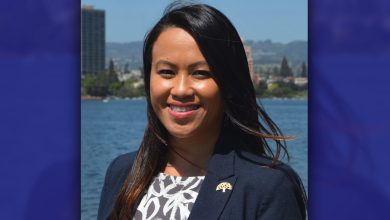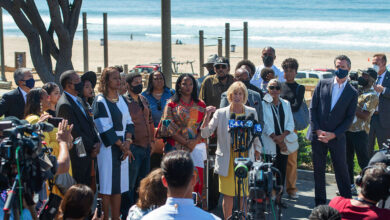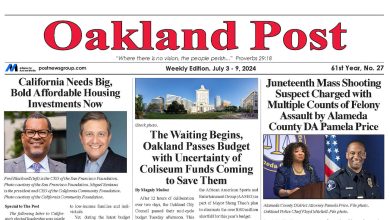Reports Cast Shadows on the Economic Picture for Black Californians

By Edward Henderson
California Black Media
On Feb. 16, 2022, a Black student in the Santa Barbara Unified School District was assaulted by Latino students. His attackers called him the N-word and kneeled on his neck while repeatedly chanting the name “George Floyd.” A district-wide acknowledgment of the hate crime was sent six days later.
Despite the psychological trauma this student experienced, the school did little to provide him with mental health support.
Connie Alexander-Boaitey, the president of the Santa Barbara branch of the NAACP, says African Americans are often minimized in her city due to being the smallest demographic group.
Alexander-Boaitey spoke during an Oct. 27 news briefing hosted by Ethnic Media Services on school bullying.
She was joined by Becky L. Monroe, the deputy director of strategic initiatives and external affairs at the California Civil Rights Department; Dashka Slater, an award-winning journalist and author who has written books about child bullying victims; and Mina Fedor, a young Asian American activist who founded the organization AAPI Youth Rising.
Alexander-Boaitey said the hate crimes and incidents affecting children are all connected to “generational pain” for Black Americans. Primarily, there is “a pervasive calling of the N-word by young Latino students,” she said. “It’s every day. It’s weekly.”
She said that a Black family in Santa Barbara now walks their child to school to protect her from bullying classmates, and another has pulled their daughter out of the school system completely, opting for homeschooling.
The Santa Barbara Unified School District commissioned a survey titled “2023 Anti-Blackness and Racial Climate Assessment and Analysis” that proposed a set of recommendations for addressing the problem.
The hate incidents targeting African American children are increasing across California, according to the NAACP. These incidents, often involving physical violence and verbal abuse, are more frequent as Black families relocate to predominantly Latino neighborhoods.
In Santa Barbara, African Americans make up only 2% of the population but account for the most victims of bullying and hate crimes in the area. At 47.5%, Latinos make up the majority of Santa Barbara’s population followed by white people at 43.5%. According to the local NAACP branch, most of the perpetrators of the bullying and hate crimes are Latino children.
Alexander-Boaitey says she believes the hate incidents are rooted in historic racism and connected to a general desire to make Black people invisible — expressed through one racially oppressed group pushing out another in an attempt to get closer to whiteness.
According to Dashka Slater, 3 in 4 Americans of ages 15 to 25 have run into extremist content online. One in four students between the ages of 12 and 18 have seen hateful graffiti in their schools. About 1.3 million students were bullied because of some aspect of their identity during the 2018-2019 school year, and half of those children were targeted because of their race.
“Some forms of bullying are, in fact, acts of hate,” said Monroe. “Some acts of hate are crimes, while others are violations of other civil rights laws. Some may be lawful but incredibly harmful, nonetheless. We must recognize the civil rights issues at the heart of this discussion around bullying.”
Monroe also spoke about the state law requiring schools to provide all students with a safe environment free of harassment.
“Schools have a legal obligation to ensure that students are not denied opportunities, treated differently, discriminated against, or harassed because of their race, color, national origin, gender, gender identity, sexual orientation, religion, or disability,” she said.
Studies have shown that students who perpetuate racially motivated bullying don’t necessarily ascribe to racist ideologies but are simply influenced by outside sources or mirroring behavior from their parents or guardians at home.
Alexander-Boaitey says Black and Latino leaders and residents from the area have not formally met yet to resolve tensions brewing between their communities.
“I know this is where the struggle really is,” she added. “We have to actually sit down and have our own conversations. Has it happened? No, it has not happened … What supports it not happening is the erasure culture that says, no, we don’t really need to talk about that, oh, it was just a single incident.”
The state of California provides resources for victims of hate crimes or incidents. Victims or witnesses can report a hate crime or incident https://stophate.calcivilrights.ca.gov/s/
They can also call 833-8-NO-HATE; (833) 866-4283 Monday-Friday from 9 a.m.-6 p.m. or call 211.
This California Black Media report was supported in whole or in part by funding provided by the State of California, administered by the California State Library.





